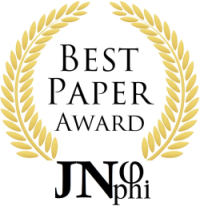How Testosterone and Serotonin Drive the Shift in Global Power Dynamics, and Geopolitics of Social Conflict in the Clash of Civilizations
Abstract
The recent atrocious war starting in 2022 between Russia and Ukraine has highlighted the underlying fundamental tensions between the two polar sides of the Eurasian grand supercontinent, connecting Western Europe (and also the United States across the Atlantic Ocean, further west) on one polar side, versus the Far East of Asia where China is centered on the other polar side, and Russia, as a land bridge between them then absorbing influences from both sides through its history over the last millennium. This great geophysical divide has been an important point in history of human conflict, in periods of war such as the great invasion of the Mongol hoards beginning in the thirteenth century, leading to the unification of today’s Russia, China, and Iran (ancient Persia) under the Mongol Empire. The Rise of the Islamic Empire in the seventh century also led to great conquest stretching from the east in China to Spain (Andalusia) in the West. Today, in the twenty-first century, we are experiencing similar challenges with rise of Islamic jihad for global caliphate and global social conflict in the East-West paradigm. In this article we shall examine this fundamental global social divide from the holistic view of Sociophysics, seeking to understand the dynamic behavior of human crowds in terms of complex system moved by physical, biological and social forces. This work further develops the theory presented in the 2019 article, “Solar Cycles, Light, Sex Hormones and The Life Cycles of Civilization: Toward Integrated Chronobiology”, which suggests sex and growth hormones, driven by seasonal solar patterns (chronobiology) are the driving force of human social dynamics. According to this view, solar energy levels reaching us as daylight determine human sex hormones levels, regulating our biological and sexual behavior, by driving human social mood trends and collective action, manifesting itself in the rhythm of human history from fall of civilization to a Dark Age of plagues pandemics and wars, to rebirth into a Renaissance leading to an age of Enlightenment.
Keywords:
Sex hormones, chronosociobiology, geopolitics, social conflict, evolutionary psychologyDownloads
Metrics
References
Barzilai R. Solar Cycles, Light, Sex Hormones and the Life Cycles of Civilization: Toward Integrated Chronobiology. Science & Philosophy 2019a; 7(2). https://doi.org/10.23756/sp.v7i2.483
Barzilai R. The Testosterone Paradox: How Sex Hormones Shape the Academic Mind. Science & Philosophy 2019b; 7(1). DOI: 10.23756/sp.v7i1.453
Barzilai R. Low Solar Activity, Winter Flu Conditions, Pandemics and Sex Wars: A Holistic View of Human Evolution. Science & Philosophy 2020a; 8(1). https://doi.org/10.23756/sp.v8i1.514
Barzilai R. Are Low Testosterone and Sex Differences in Immune Responses Causing Mass Hysteria During the Coronavirus Pandemic? Science & Philosophy 2020b; 8(1). DOI: 10.23756/sp.v8i2.529
Chiao JY & Blizinsky KD. Culture–Gene Coevolution of Individualism–Collectivism and the Serotonin Transporter Gene. Proceedings of the Royal Society B, Biological Sciences 2009; 277(1681). https://doi.org/10.1098/rspb.2009.1650
Downloads
Published
How to Cite
Issue
Section
Categories
License
Copyright (c) 2023 Roy Barzilai

This work is licensed under a Creative Commons Attribution-NonCommercial-ShareAlike 4.0 International License.
Authors continue to hold copyright with no restrictions.














